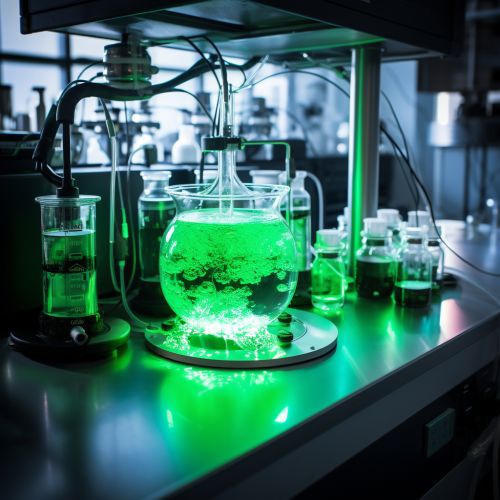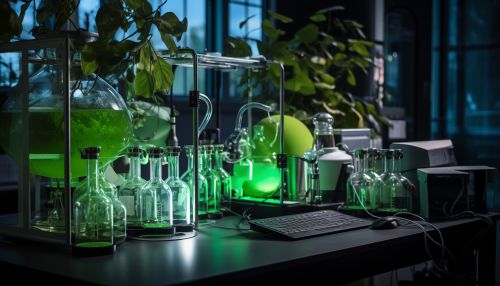Green Synthesis of Nanoparticles
Introduction
Green synthesis of nanoparticles refers to the use of green chemistry principles in the production of nanoparticles. Nanoparticles are particles between 1 and 100 nanometers in size with a surrounding interfacial layer. The green synthesis approach aims to reduce the environmental impact of nanoparticle synthesis by minimizing the use of harmful chemicals and energy-intensive processes.


Green Chemistry Principles in Nanoparticle Synthesis
The principles of green chemistry provide a framework for designing and implementing environmentally friendly chemical processes. These principles can be applied to the synthesis of nanoparticles to reduce the environmental impact of their production. The key principles of green chemistry that are relevant to nanoparticle synthesis include:
- Prevention of waste: The green synthesis of nanoparticles aims to minimize waste production by using efficient reactions that maximize product yield and minimize by-products.
- Safer solvents and auxiliaries: Green synthesis methods aim to avoid the use of hazardous solvents and reaction conditions.
- Design for energy efficiency: Green synthesis methods aim to minimize energy consumption by using low-energy processes and reactions.
- Use of renewable feedstocks: Whenever possible, green synthesis methods aim to use renewable or recycled materials as feedstocks.
- Design for degradation: Green synthesis methods aim to produce nanoparticles that can be safely degraded in the environment.
Methods of Green Synthesis of Nanoparticles
Several methods have been developed for the green synthesis of nanoparticles. These methods typically involve the use of biological entities or environmentally friendly chemicals as reducing agents to convert metal ions into nanoparticles. Some of the most common methods include:
- Biosynthesis: This method involves the use of living organisms, such as bacteria, fungi, and plants, to produce nanoparticles. The organisms reduce metal ions to nanoparticles using their metabolic processes.
- Phytochemical synthesis: This method involves the use of plant extracts to reduce metal ions to nanoparticles. The plant extracts contain various phytochemicals that can act as reducing agents.
- Microbial synthesis: This method involves the use of microorganisms, such as bacteria and fungi, to produce nanoparticles. The microorganisms reduce metal ions to nanoparticles as part of their metabolic processes.
- Green chemical synthesis: This method involves the use of environmentally friendly chemicals as reducing agents to produce nanoparticles. The chemicals are typically derived from renewable sources and are biodegradable.
Applications of Green Synthesis Nanoparticles
The nanoparticles produced by green synthesis methods have a wide range of applications in various fields. These include:
- Medicine: Green synthesized nanoparticles are used in drug delivery, imaging, and therapeutics. For example, silver nanoparticles synthesized using green methods have been used in antimicrobial treatments.
- Environmental remediation: Green synthesized nanoparticles can be used in the removal of pollutants from the environment. For example, iron nanoparticles synthesized using green methods have been used in the remediation of contaminated groundwater.
- Catalysis: Green synthesized nanoparticles can act as catalysts in various chemical reactions. For example, gold nanoparticles synthesized using green methods have been used as catalysts in the oxidation of alcohols.
- Electronics: Green synthesized nanoparticles are used in the manufacture of electronic devices. For example, copper nanoparticles synthesized using green methods have been used in the fabrication of conductive inks for printed electronics.
Challenges and Future Directions
Despite the many advantages of green synthesis methods, there are several challenges that need to be addressed. These include the control of nanoparticle size and shape, the scalability of green synthesis methods, and the stability of the synthesized nanoparticles.
Future research in the field of green synthesis of nanoparticles is likely to focus on developing new green synthesis methods, improving the control over nanoparticle properties, and exploring new applications for green synthesized nanoparticles.
